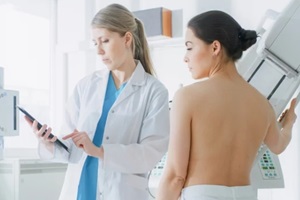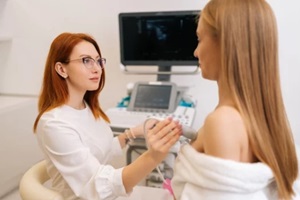 Breast cancer is one of the leading causes of female mortality, though it can affect anyone with breast tissue. One of the most essential elements of preventing breast cancer development is catching potentially cancerous growth early when it is at its most treatable. Mammography is one option for doing so, though many women also choose to do self-exams.
Breast cancer is one of the leading causes of female mortality, though it can affect anyone with breast tissue. One of the most essential elements of preventing breast cancer development is catching potentially cancerous growth early when it is at its most treatable. Mammography is one option for doing so, though many women also choose to do self-exams.
While both are pivotal in health care, mammography and breast self-exams serve different functions. If you have not been doing self-exams, the best time to start is now! And if you are overdue for a mammogram, take some time out of your day to schedule one today.
Do You Need a Mammogram If You Do Self-Exams?
Many people mistakenly believe that self-exams are simply a replacement for getting a mammogram. However, patients should be sure to take the time to do both.
A self-exam provides the first line of defense, allowing patients to notice potential changes to their breast tissue between doctor’s appointments.
However, mammography can visualize areas of the breast that patients cannot feel, providing a more thorough view of the breast tissue.
Thus, mammography and self-exams are not two separate strategies; they work best when used together to create the most complete picture of breast health.
What You Can Identify
Both self-exams and mammograms can help to identify potentially cancerous growth in the breast tissue, but each offers individual advantages.
With a self-exam
A breast self-exam is useful because it is simple, time-efficient, and repeatable as often as the patient desires. Many people choose to perform a quick self-exam when taking a shower or before going to sleep while lying in bed.
Self-exams allow individuals to become familiar with the typical state of their breast tissue, equipping them with the knowledge and experience to quickly identify when something has changed.
With a mammogram
 A mammogram is a more intensive process that requires an office visit to visualize the breast tissue with a special machine. It can provide a picture of the entire breast, including areas that are difficult to access or too deep for manual exams to reach.
A mammogram is a more intensive process that requires an office visit to visualize the breast tissue with a special machine. It can provide a picture of the entire breast, including areas that are difficult to access or too deep for manual exams to reach.
Thus, a mammogram creates a thorough image that can identify potentially cancerous growths that are too small or too remote to be felt immediately. This type of imaging can also find other problems, such as cysts that may be causing discomfort.
How to Perform a Self-Exam the Right Way
Performing a breast self-exam is simple! Starting from the nipple, gently use the pads of your fingers to push into the tissue in a straight line up toward the collarbone.
Imagine the breast as a clock and start with 12. Then, once you have completed one line, move on to 1, and then 2, and so forth until you have thoroughly examined the breast tissue in all directions.
Throughout this process, it can be helpful to repeat a line at varying pressures; start with a light touch, then do the same motion again with a heavier press. This helps to palpate surface-level and deeper tissue, allowing you to identify more potential areas of concern if they are hidden far below the skin.
Preparing for a Mammogram
Breast self-exams are a useful way to keep track of breast health at home. Still, patients should also schedule mammograms regularly—especially if they have a family history of breast cancer, a genetic predisposition, or are over the age of 40.
Getting ready for a mammogram does not require in-depth preparation; there are only a few things to keep in mind.
- Compile a list of all the medications you are taking and the results of any previous mammograms to bring with you.
- The technician will ask you to remove your top, so wear clothing that is simple and easy to take off.
 Do not wear lotion, deodorant, or any other substance applied to the skin of the torso and underarm areas, as this can appear in mammogram imaging and interfere with results.
Do not wear lotion, deodorant, or any other substance applied to the skin of the torso and underarm areas, as this can appear in mammogram imaging and interfere with results.- Try to schedule the appointment for a time when the breasts will not be tender; the two weeks after a menstrual cycle are often ideal.
Get Regular Mammograms to Preserve Your Health
Both mammograms and breast self-exams have important roles to play in a person’s overall health in the long term, and doing one does not mean that you can skip the other. If you are overdue for a mammogram, or if you have noticed something that you want to check up on, be sure to schedule as soon as possible.
Contact Raleigh Gynecology & Wellness to set up your mammogram appointment and invest in good breast health alongside your regular at-home self-exams.
